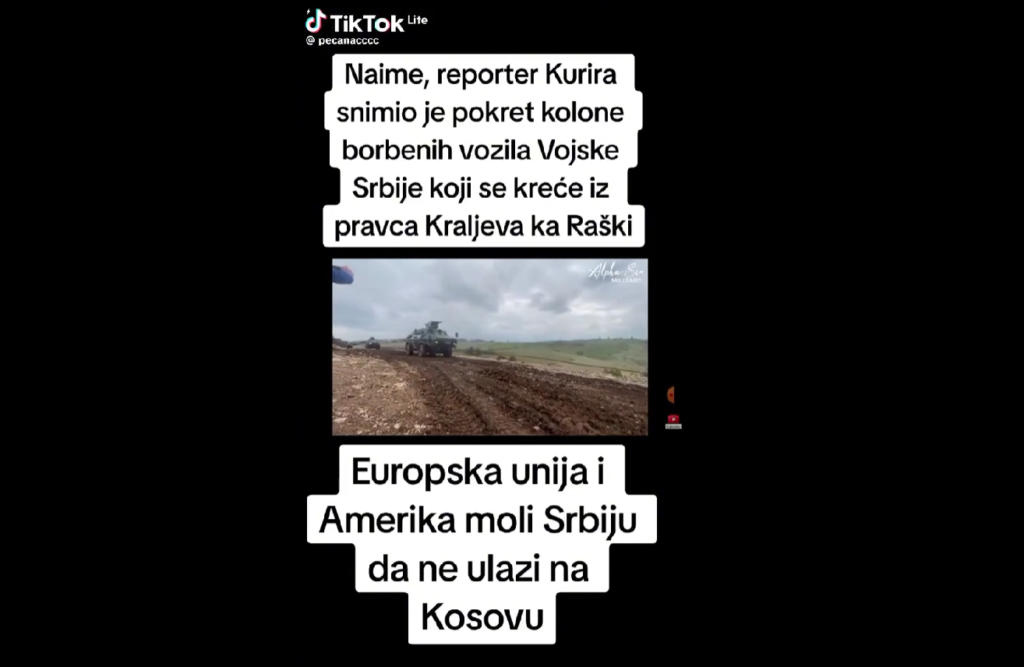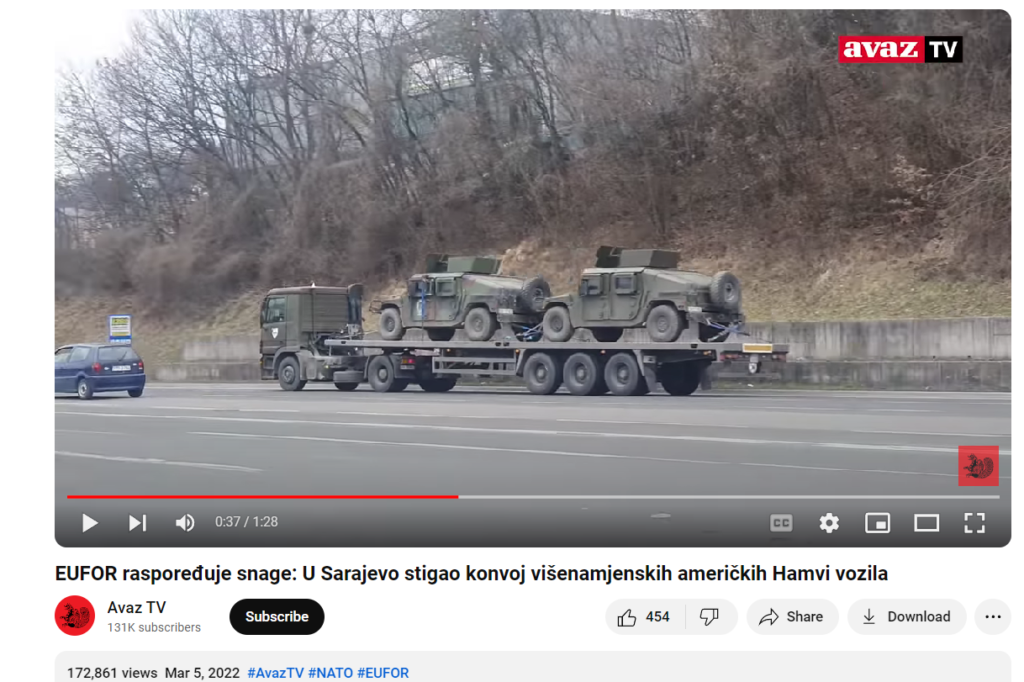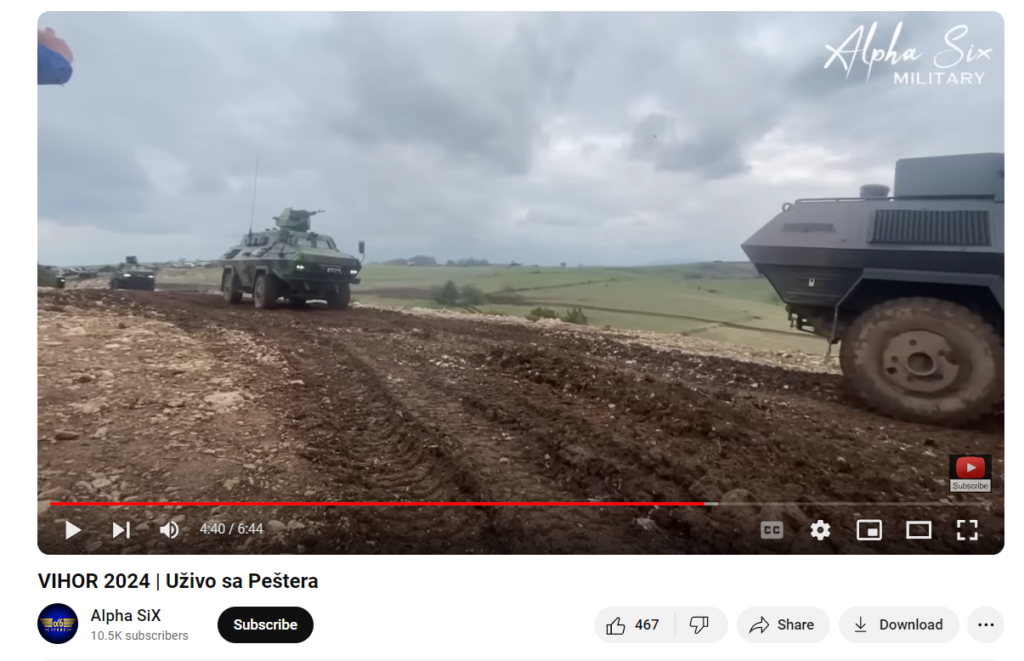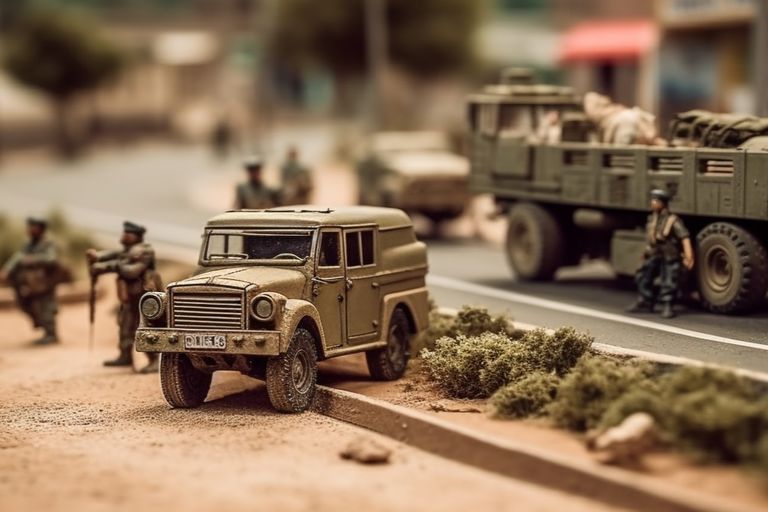Original article (in Bosnian) was published on 7/5/2024; Author: Nerma Šehović
At the end of April, amidst current political tensions, old footage and news reports of military convoy movements in Bosnia and Herzegovina and the surrounding region were circulated on social networks.
At the end of April, amid rising political tensions in Bosnia and Herzegovina, various war-mongering posts were shared on social networks. Raskrinkavanje has previously reported on fake documents allegedly from state institutions, calling for mobilization or falsely informing the public about the closure of national borders due to anticipated unrest (link).
Furthermore, footage showing military vehicle convoys was also shared on social networks, accompanied by ‘announcements’ of a potential armed conflict in Bosnia and Herzegovina or neighboring countries.
On April 24, 2024, a video depicting military vehicles was posted on Facebook and Instagram. It claimed that an increasing number of troops were arriving in Bosnia and Herzegovina, with the centrist Party for Bosnia and Herzegovina urging ‘everyone to prepare for a possible war.’ The footage, which shows trucks transporting military vehicles, was clearly filmed in Bosnia and Herzegovina, as evidenced by the road markings.

A day earlier, a video showcasing a convoy of military vehicles was shared on Facebook, originally posted on TikTok. The video, claimed to have been recorded by a reporter from Kurir, allegedly shows Serbian Army combat vehicles advancing towards Raška, near the Kosovo border.

This post garnered hundreds of interactions on social media.
Old Footage and New Half-Truths
There is a grain of truth in the April 23 post. The Party for Bosnia and Herzegovina did publish a statement calling on the Armed Forces of Bosnia and Herzegovina to begin operational preparations “to defend the state against the threat coming from the leadership of the Republika Srpska entity”. However, this political party did not publish any video of the convoy of military vehicles, nor did it mention an army entering Bosnia and Herzegovina.
The video that was circulated on social networks, stirring concerns of war, is actually over two years old. As reported by the web portal Avaz on its YouTube channel on March 5, 2022, this video features multipurpose Humvee vehicles brought to Sarajevo by EUFOR forces. These vehicles were previously donated to the Armed Forces of Bosnia and Herzegovina by the US Government.

The video, allegedly showing vehicles moving from Serbia to Kosovo and published on April 23, was sourced from the TikTok account pecanacccc, which often publishes war-mongering and nationalist content. At the time of writing this analysis, we were unable to find this footage on this profile. However, we did find a video posted on September 25, 2023, featuring similar overlay text.
On September 22, 2023, the tabloid Kurir reported on a convoy of military vehicles moving from Kraljevo towards Raška in Serbia. The article included footage of the event, which differs significantly from the video published on Facebook at the end of April. This report was released during a period of heightened tensions between Kosovo and Serbia, just two days before the incident in Banjska, where an exchange of gunfire between Kosovo police and an armed group of Serbs resulted in four fatalities. While the article mentioned that the reason for the convoy’s movement was unclear, it is now evident that the Serbian Army did not enter Kosovo.

The video published on Facebook actually depicts the Serbian army’s exercise named ‘Vihor 2024,’ conducted at the end of April in Peštera, in southwestern Serbia. On April 19, footage of this exercise was released on the Alpha SiX YouTube channel. At the four-minute mark of the video, there is footage that was subsequently downloaded and shared on Facebook, accompanied by a misleading claim about the Serbian Army moving towards Kosovo.

Moreover, neither the USA nor the European Union issued calls for the Serbian Army to refrain from entering Kosovo, and Serbia itself made no such announcement (1, 2).
In both analyzed cases, old footage and news were repurposed to make claims about the current political situation in Bosnia and Herzegovina and the region, aiming to spread panic and unsettle the public.
Considering all the facts, we assess the manipulative use of military column footage with implications of war starting in BiH and Kosovo as a manipulation of facts.



